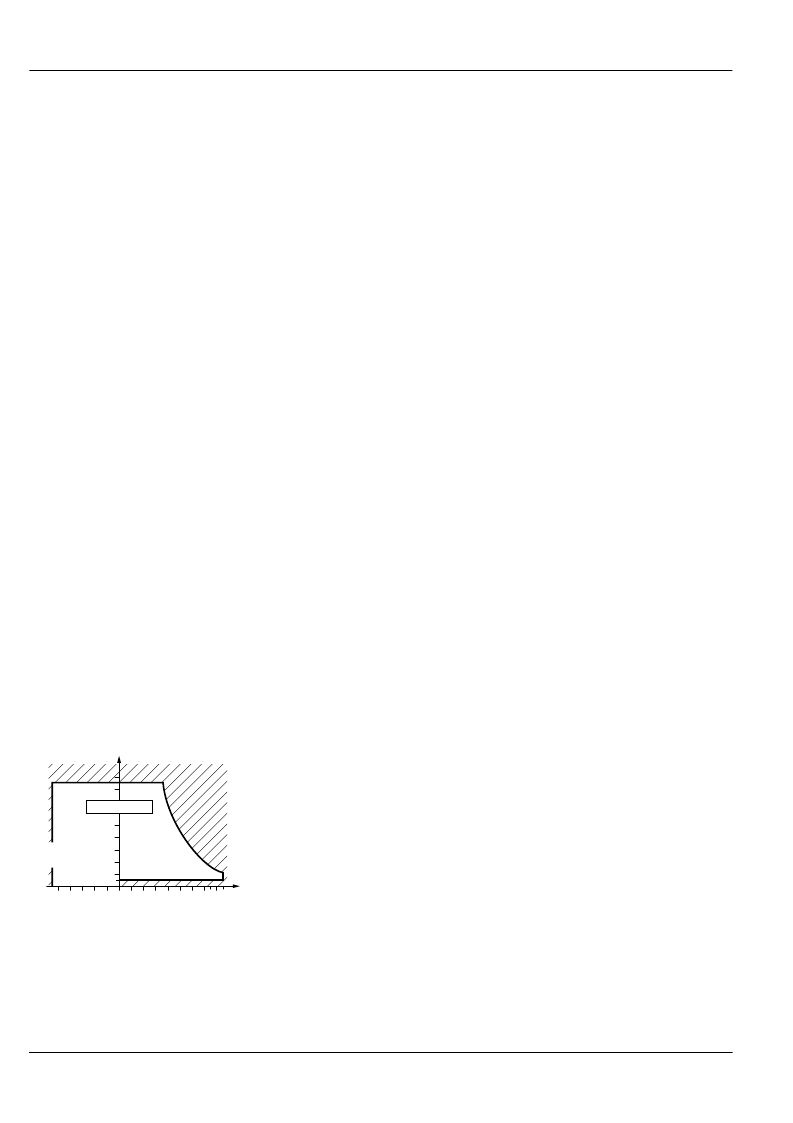- 您现在的位置:买卖IC网 > Sheet目录394 > ARD15112Q (Panasonic Electric Works)SWITCH COAX LATCH SPDT 18GHZ 12V
�� ��
��
 ��
��RD� (ARD)�
�NOTES�
�1.� For� general� cautions� for� use,� please�
�refer� to� the� “General� Application�
�Guidelines”.�
�2.� Coil� operating� power�
�Pure� DC� current� should� be� applied� to� the�
�coil.� The� wave� form� should� be�
�rectangular.� If� it� includes� ripple,� the� ripple�
�factor� should� be� less� than� 5%.�
�However,� check� it� with� the� actual� circuit�
�since� the� characteristics� may� be� slightly�
�different.� The� nominal� operating� voltage�
�should� be� applied� to� the� coil� for� more�
�than� 50� ms� to� set/reset� the� latching� type�
�relay.�
�Please� use� the� latching� type� for� circuits�
�that� are� continually� powered� for� long�
�periods� of� time.�
�3.� Coil� connection�
�When� connecting� coils,� refer� to� the� wiring�
�diagram� to� prevent� mis-operation� or�
�malfunction.�
�4.� Connection� of� coil� indicator� and�
�washing� conditions�
�1)� The� connection� of� coil� indicator�
�terminal� shall� be� done� by� soldering.�
�Soldering� conditions�
�Max.� 260� °� C� 500� °� F� (solder� temp)� within�
�10sec� (soldering� time)�
�Max.� 350� °� C� 662� °� F� (solder� temp)� within�
�3sec� (soldering� time)�
�2)� This� product� is� not� sealed� type,�
�therefore� washing� is� not� allowed.�
�5.� Conditions� for� operation,� transport�
�and� storage� conditions�
�1)� Temperature:�
�–55� to� +85� °� C� –67� to� +185� °� F�
�2)� Humidity:� 5� to� 85%� RH�
�(Avoid� freezing� and� condensation.)�
�The� humidity� range� varies� with� the�
�temperature.� Use� within� the� range�
�indicated� in� the� graph� below.�
�3)� Atmospheric� pressure:� 86� to� 106� kPa�
�Temperature� and� humidity� range� for�
�usage,� transport,� and� storage:�
�Humidity,� %RH�
�85�
�Tolerance� range�
�(Avoid� freezing� when� (Avoid�
�used� at� temperatures� condensation� when�
�lower� than� 0� °� C� 32� °� F� )� used� at� temperatures�
�higher� than� 0� °� C� 32� °� F� )�
�5�
�4)� Condensation�
�Condensation� forms� when� there� is� a�
�sudden� change� in� temperature� under�
�high� temperature� and� high� humidity�
�conditions.� Condensation� will� cause�
�deterioration� of� the� relay� insulation.�
�5)� Freezing�
�Condensation� or� other� moisture� may�
�freeze� on� the� relay� when� the� temperature�
�is� lower� than� 0� °� C� 32� °� F� .� This� causes�
�problems� such� as� sticking� of� movable�
�parts� or� operational� time� lags.�
�6)� Low� temperature,� low� humidity�
�environments.�
�The� plastic� may� become� brittle� if� the� relay�
�is� exposed� to� a� low� temperature,� low�
�humidity� environment� for� long� periods� of�
�time.�
�6.� Other� handling� precautions.�
�1)� The� relay’s� on/off� service� life� is� based�
�on� standard� test� conditions� (temperature:�
�15� to� 35� °� C� 59� to� 95� °� F� ,� humidity:� 25� to�
�75%)� speci?ed� in� JIS� C5442-1996.� Life�
�will� depend� on� many� factors� of� your�
�system:� coil� drive� circuit,� type� of� load,�
�switching� intervals,� switching� phase,�
�ambient� conditions,� to� name� a� few.�
�2)� Use� the� relay� within� speci?cations�
�such� as� coil� rating,� contact� rating� and� on/�
�off� service� life.� If� used� beyond� limits,� the�
�relay� may� overheat,� generate� smoke� or�
�catch� ?re.�
�3)� Be� careful� not� to� drop� the� relay.� If�
�accidentally� dropped,� carefully� check� its�
�appearance� and� characteristics� before�
�use.�
�4)� Be� careful� to� wire� the� relay� correctly.�
�Otherwise,� malfunction,� overheat,� ?re� or�
�other� trouble� may� occur.�
�5)� The� latching� type� relay� is� shipped� in�
�the� reset� position.� But� jolts� during�
�transport� or� impacts� during� installation�
�can� move� it� to� the� set� position.� It� is,�
�therefore,� advisable� to� build� a� circuit� in�
�which� the� relay� can� be� initialized� (set� and�
�reset)� just� after� turning� on� the� power.�
�6)� If� a� relay� stays� on� in� a� circuit� for� many�
�months� or� years� at� a� time� without� being�
�activated,� circuit� design� should� be�
�reviewed� so� that� the� relay� can� remain�
�non-excited.� A� coil� that� receives� current�
�all� the� time� heats,� which� degrades�
�insulation� earlier� than� expected.� A�
�latching� type� relay� is� recommended� for�
�7)� For� SMA� connectors,� we� recommend�
�a� torque� of� 0.90� ±� 0.1� N·m� for� installation,�
�which� falls� within� the� prescribed� torque� of�
�MIL-C-39012.� Please� be� aware� that�
�conditions� might� be� different� depending�
�on� the� connector� materials� and� how� it�
�interacts� with� surrounding� materials.�
�8)� Please� do� not� use� silicon� based�
�substances� such� as� silicon� rubber,� silicon�
�oil,� silicon� coatings� and� silicon� ?llings,� in�
�the� vicinity� of� the� relay.� Doing� so� may�
�cause� volatile� silicon� gas� to� form� which�
�may� lead� to� contact� failure� due� to� the�
�adherence� of� silicon� on� the� contacts�
�when� they� open� and� close� in� this�
�atmosphere.�
�9)� Please� note� that� when� switching�
�contacts� (latching� type� only),� you� must�
�apply� reset� (ALL)� voltage� and� release� all�
�contacts� ?rst.� (SP6T� type)�
�10)� Do� not� use� multiple� contacts�
�simultaneously.� (SP6T� type)�
�11)� The� indicator� terminal� is� the� terminal�
�that� indicates� the� operation� status� of� the�
�MAIN� contact.�
�12)� For� details� about� the� drive� method� of�
�the� latching� with� TTL� driver� type,� please�
�refer� to� the� RD� coaxial� switch� catalog� on�
�the� website.�
�–55�
�–67�
�0�
�+32�
�+85�
�+185�
�such� circuits.�
�Temperature,� °� C� °� F�
�Panasonic� Corporation�
�Automation� Controls� Business� Unit�
�industrial.panasonic.com/ac/e/�
�ASCTB103E� 201202-T�
�发布紧急采购,3分钟左右您将得到回复。
相关PDF资料
AS-M15TAN-R
AMR SWITCH SENSOR W/MAGNET
AS176-59LF
IC SW SPDT DC-3.0GHZ GAAS 8MSOP
AS183-92LF
IC SW SPDT 300K-2.5GHZ SC-88
AS186-302LF
IC SW SPDT LF-4GHZ GAAS 8-MSOP
AS195-306LF
IC SW SP5T .01-2GHZ GAAS 16QFN
AS196-307LF
IC SW SPDT LF-6GHZ GAAS 16-QFN
AS211-334
IC SW SPDT DC-4GHZ GAAS 6-LGA
AS213-92LF
IC SW SPDT 0.1-3GHZ GAAS SC88
相关代理商/技术参数
ARD15112QJ
制造商:Panasonic Electric Works 功能描述:
ARD15124
功能描述:同轴开关 SWITCH COAX LATCH SPDT 18GHZ 24V
RoHS:否 制造商:Teledyne Relays 触点形式:SPDT 频率:18 GHz 线圈电压:12 VDC 端接类型:SMA VSWR:1.5 介入损耗:0.5 dB 绝缘:60 dB
ARD15124C
制造商:NAIS 制造商全称:Nais(Matsushita Electric Works) 功能描述:26.5GHz, 18GHz COAXIAL SWITCH
ARD15124CQ
制造商:NAIS 制造商全称:Nais(Matsushita Electric Works) 功能描述:26.5GHz, 18GHz COAXIAL SWITCH
ARD15124J
制造商:Panasonic Electric Works 功能描述:
ARD15124Q
功能描述:同轴开关 SWITCH COAX LATCH SPDT 18GHZ 24V
RoHS:否 制造商:Teledyne Relays 触点形式:SPDT 频率:18 GHz 线圈电压:12 VDC 端接类型:SMA VSWR:1.5 介入损耗:0.5 dB 绝缘:60 dB
ARD15124QJ
制造商:Panasonic Electric Works 功能描述:
ARD20012
功能描述:同轴开关 Transfer, 12 VDC, 2
RoHS:否 制造商:Teledyne Relays 触点形式:SPDT 频率:18 GHz 线圈电压:12 VDC 端接类型:SMA VSWR:1.5 介入损耗:0.5 dB 绝缘:60 dB